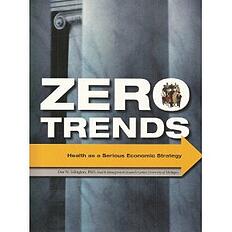 Smartphones and related devices are pretty versatile. They can remind you where you parked your car, help you locate the nearest drugstore, and provide you with the latest gardening tips. But did you also know that they could help your employees stay committed to their health and fitness goals?
Smartphones and related devices are pretty versatile. They can remind you where you parked your car, help you locate the nearest drugstore, and provide you with the latest gardening tips. But did you also know that they could help your employees stay committed to their health and fitness goals?
Some of the most popular smartphone applications that are available (for purchase or for free) can help you design a fitness routine or report the calorie content of the jumbo java you’re eyeing. Here are a few apps your employees might find useful for staying on track and improving their health and fitness.
Do your employees need help designing a beneficial fitness routine?
App: iFitness
Available for: iPhone, BlackBerry, iPod Touch
Price: $1.99
Ranked the number-one paid fitness application for iPhone, this application is like a personal trainer in your pocket. iFitness enables you to view up to 100 exercises (pictures and instructions included) by muscle group or select one of the 12 predesigned workouts to follow. Once you’ve mastered the preset routines, you can create your own. You also have the ability to track your progress by making notes; recording sets, reps, and weight lifted; and other achievements like weight and inches lost.
Help overweight employees take off those unwanted pounds.
App: Lose It!
Available for: iPhone and iPod Touch
Price: Free
This app is a calorie-tracking tool that uses a predetermined equation to establish what your daily calorie intake should be based on your target weight goal. The large database allows you to enter the foods you’ve eaten, including the portion size, and track your intake each day. Lose It! hasn’t forgotten about exercise, either. Enter an activity like playing Frisbee or mowing the lawn, and it is factored into your daily caloric allowance.
Chill Out: Help employees relax and de-stress.
App: iRelax Melodies Lite and iRelax Premium
Available for: iPhone, iPod Touch, and iPad
Price: Lite—free; Premium—$3.99
iRelax Melodies is the self-titled “Sleep & Meditation & Yoga & Relaxation Helper.” Listen to one of four looping sounds on the Lite version designed to help you relax or sleep. Other features allow you to mix any of the sounds yourself for a personalized melody as well as a timer that ends the melody at the time you decide. Save and replay your favorite melodies anytime you need to escape. The premium edition includes 36 melodies as well as binaural beats known to help the brain reach a particular relaxation state.
Improve employee health one morsel at time.
App: Morsel
Available for: Apple devices, Android, and BlackBerry
Price: Free
Move toward a healthier lifestyle one daily, healthy suggestion at a time. This application from GE offers up simple daily tasks, or “morsels,” that everyone can do. “Morsel empowers you to take control of your well-being, one step at a time,” says the app description. Examples of the daily tasks include
- "Drink and refill a water bottle."
- "Don’t put extra salt on anything you eat today."
- "Walk backwards for 10 steps."
Help your employees stop smoking.
App: No Smoking
Available for: BlackBerry
Price: $9.99
Thinking about quitting smoking? This app may be for you. No Smoking is designed to slowly wean you off cigarettes by first learning your smoking pattern. The app records your smoking frequency and severity. Then, when you’re ready to quit, it really goes to work. The app uses the information it learns and tailors a smoking schedule that slowly decreases your smoking frequency, lowering your nicotine level over time until you’ve completely quit.
App: iQuit
Available for: Apple devices
Price: $1.99
Not only does this app keep track of the number of days it’s been since you quit smoking, it displays the extra life you’ve gained and the amount of money you’ve saved by not buying cigarettes. When you download this app to your iPhone, you’ll be able to see how your health has improved with stats like, “After 2-12 weeks, your circulation improves, making walking and running a lot easier.”
Does your company offer Weight Watchers for Employees?
App: Weight Watchers Mobile
Available for: Apple devices and BlackBerry
Price: Included with Weight Watchers fee
Weight Watchers Mobile makes searching and tracking point values (the units associated with the Weight Watchers weight-loss program) simple and convenient. This app can help you make selections that fit within your point budget when you’re eating out at a restaurant or picking up some groceries on your way home from work. Don’t forget about those activity points, either. When you’ve completed your two-mile walk, enter it in your activity log for easing tracking.
Other health-related apps your employees could use:


 Smartphones and related devices are pretty versatile. They can remind you where you parked your car, help you locate the nearest drugstore, and provide you with the latest gardening tips. But did you also know that they could help your employees stay committed to their health and fitness goals?
Smartphones and related devices are pretty versatile. They can remind you where you parked your car, help you locate the nearest drugstore, and provide you with the latest gardening tips. But did you also know that they could help your employees stay committed to their health and fitness goals? There is, however, another way to look at employee health and wellness: Something really is better than nothing. In his book
There is, however, another way to look at employee health and wellness: Something really is better than nothing. In his book 
 quota to be considered among the elite at your worksite wellness center. All you have to do is start breaking a sweat.
quota to be considered among the elite at your worksite wellness center. All you have to do is start breaking a sweat.
 With our busy lifestyles, running to the pharmacy is just that: racing in and out as quickly as possible. Is this placing employee health in danger? Well, it could be. It's ultimately up to each of us to filter what substances go into our bodies.
With our busy lifestyles, running to the pharmacy is just that: racing in and out as quickly as possible. Is this placing employee health in danger? Well, it could be. It's ultimately up to each of us to filter what substances go into our bodies. In my last post, I explained that functional capacity is exercising in a way that improves the ability to perform activities of daily living. In this post I look at how this concept is being used in senior fitness classes and corporate fitness programs--in place of more traditional but less efficient training.
In my last post, I explained that functional capacity is exercising in a way that improves the ability to perform activities of daily living. In this post I look at how this concept is being used in senior fitness classes and corporate fitness programs--in place of more traditional but less efficient training. Although each day may technically be a new day, today brings the stresses of yesterday and the preparations of tomorrow. Nowadays a 40-hour work week is hard to come by, and going home without work is even harder to swing. With all of this added work comes added
Although each day may technically be a new day, today brings the stresses of yesterday and the preparations of tomorrow. Nowadays a 40-hour work week is hard to come by, and going home without work is even harder to swing. With all of this added work comes added  Between inflation, the rise and fall of the stock market, never-ending projects at work, and screaming kids, there are plenty of things in a employee’s life that can lead them to feel overwhelmed. While we all feel this way from time to time, feelings of
Between inflation, the rise and fall of the stock market, never-ending projects at work, and screaming kids, there are plenty of things in a employee’s life that can lead them to feel overwhelmed. While we all feel this way from time to time, feelings of